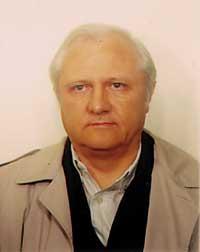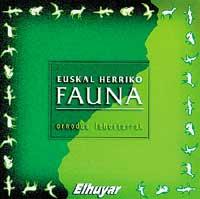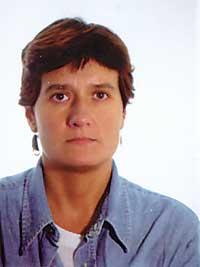Year after year, prevented
1997/11/01 Irazabalbeitia, Inaki - kimikaria eta zientzia-dibulgatzaileaElhuyar Fundazioa Iturria: Elhuyar aldizkaria
I will try to explain the main lines and facts, knowing that, on the other hand, I will not be objective because I have been witness, protagonist and, to a certain extent, agent of that story. It will be a subjective vision and I will have to make choices, but in the name of the testimony I apologize, beforehand, if the vision is personal.
The roots of Elhuyar must be sought in the late 1960s. That time was very enriching in the socio-political life of Euskal Herria. Franco had been in power for 25 years. Political, social and cultural expression was very limited and controlled and had to be played within the strict rules set by the regime. A sample of the situation may be that, having chosen among many others, the songs of the singing festivals must move to prior censorship.
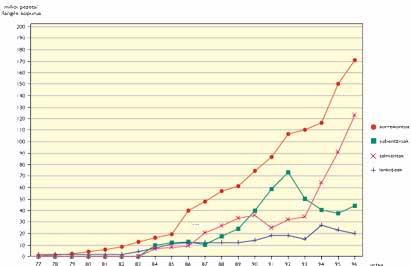
Great changes were taking place in Basque society. On the one hand, a generation that did not directly suffer the impact of the civil war, which questioned the desperation of the previous generation, acquired social prominence. On the other hand, the world of culture was in full swing and new premises were established in the plastic arts, literature, song and linguistic development.
The young generation had innovative approaches to the status of Basque. Euskera was not a language of exclusive use at home, in company or in the church, but a tool to be used in all areas of human communication. Paraphrasing Etxepare's phrase, the Basque had to leave the corner of the house to the square, with all the consequences. It is the decade in which Basque batua, the revitalization of ikastolas, the movement of Euskaldunization and literacy, Euskal Kultur Taldea (EKT), etc.
Elhuyar Kultur Elkartea, from the School of Industrial Engineers of San Sebastian, originated in one of these EKT. The school environment (tolerances by management for Basque subjects, high percentages of Basque, etc.) and the strong identity and concern of some of its students led to a strong and effective Basque environment. As a result, these engineering students were responsible for combining science with Basque.
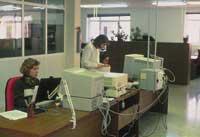
The way to effectively channel these concerns and concerns took place around the month of February 1972, when three former students of the school (Luis Mari Bandres, Jesus Mari Goñi and Andoni Sagarna) and two students (Juanjo Gabiña and Mikel Zalbide) began the meetings with the aim of spreading Basque to the world of science. The Elhuyar group was born and since then had an appointment every Saturday at four and a half in the afternoon in the Circle of San Ignacio de San Sebastián.
Elhuyar obtained the support of the Real Sociedad Bascongada de Amigos del País and for years was its branch, despite its total autonomy and that the Association never asked for accounts.
The founding group of engineers opened quickly and the meetings of Elhuyar were attended by technical engineers (such as Iñaki Azkune Mendia, of great weight in the history of the group), architects, computer scientists (Harluxet tarrak), more engineers (Félix Azpiroz, Xabier Larrea and Kepa Zalbide), chemistry students (1976), doctors (1978) and economists. Elhuyar was a multidisciplinary team in the late 1970s.
The group had at that time two main characteristics: on the one hand, the opening and, on the other, the collection of members every Saturday afternoon. Saturday meetings gave strength to the group. There were no people released to work and team members did the work agreed by the team outside their usual tasks. On Saturday's meetings it was decided what, who and how to do it and, to put it in some way, strategic planning was made. However, in these meetings, terminological and linguistic debates had a great weight in those early years. One of them is the memory of my first day in Elhuyar.
The meetings were also open: all those who were willing to work to unite Basque and science could participate; they needed no other merits or speakers. In that environment, the meetings ensured the cohesion and sustainability of Elhuyar, and why not recognize it, the following txikiteos also had some sense of group. Therefore, there was no person defined as a member of the group and regular participation in Saturday meetings made a person a member of Elhuyar. The first official list of members of Elhuyar appears in the memory of 1977 and in it 17 people appear as formators and 20 as collaborators.
Since its inception, Elhuyar has tended to collaborate with other institutions. In those early years we can mention, among others, the works carried out in the impulse of the Basque Summer University, the participation in the commission of the Dictionary of Mathematics of Euskaltzaindia or the architectural vocabulary elaborated with the Official College of Architects.
Elhuyar's initial works are based on the formation of language and people (both writers and readers). In the field of Basque and science almost everything was to be done and few exceptions were those that before the 1970s wrote in Basque on scientific issues, except for Gabirel Jauregi. The first works were the preparation of textbooks and dictionaries for ikastolas. Then came the magazine Elhuyar (1974).
Noteworthy is the Collection of Words for Science and Technology, elaborated in the field of Lexicography in 1976, 1977 and 1978, although today we only forget. The team dedicated a lot of hours to it, shortly after, that they have not had too adequate exploitation. With the analysis and emptying of the Basque written tradition, a file of 50,000 words related to science and technology was completed. In all the files the term Basque and its counterpart to Spanish were provided. The dictionary was introduced in computer support (the computer application to lexicography was pioneering) and although there was an intention to publish it, the material was finally made available to Euskaltzaindia.
As the volume of work of the group increased, it was seen that Elhuyar should somehow work the path of professionalism. This step was taken in 1977. With a half-day session two people were put to work, one in the mathematics teaching group and one as administrative. The latter was our current head of administration, María Luisa Aizpuru. However, the team's militant work remained fundamental. In 1984, the group's militant work was quantified. 24,000,000 pesetas. In the area budget the value of the work of non-professional members was 7,500,000 pesetas.
The first documented cash balance is the same year. There are entries of 1,043,000 ptas. and exits of 1.061.000 ptas., with the main sponsors of the group, in addition to the subscribers, Caja Laboral, Caja Gipuzkoa, Caja Laboral and Banco Industrial de Gipuzkoa. In expenses, the cost of the magazine exceeded half of the total.
Dictionaries, textbooks and journals were not enough to combine Basque with the world of science, if the professionals who subsequently had to use these tools were not able to develop their work in Basque. It is known that in some ikastolas of then scientific subjects were taught in Spanish, since, despite the fact that the teacher was Euskaldun, his subject was not able to work in Basque, for carrying out all the studies in Spanish. In 1979, Elhuyar organized the first specialized training courses for science teachers to address this problem and Euskaldunize professionals in its field. Four were called Technical Literacy Courses.
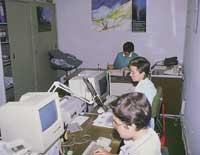
The year 1980 was a year of change. After leaving the Circle of Saint Ignatius and a short stay in the premises of the Franciscans of Atotxa, Elhuyar established its first headquarters on Garibai 23 St. Sebastian. Also, at the end of the year meeting important decisions were made that had a great long-term impact: To appoint a manager of the journal Elhuyar, to take the first steps to equip the group with its own legal personality, to create a permanent team that deals with the problems posed by the day-to-day of the group and to give more space to the texts of secondary education in the production of texts. Some of these decisions had immediate effects. In 1981 the contents and structure of the magazine were renewed and Elhuyar became a cultural association of its own legal character.
As the activities grew, the number of Elhuyar professionals grew and their weight in the company's budgets. In 1984 Elhuyar had seven freed: one for administrative tasks, two for typesetting and four for magazines and texts. This meant that the group acquired a larger headquarters and Elhuyar moved from Garibai Street to Urbieta 7 Street.
The increase of professionals in the team represented a significant change in the way of working. The change was not abrupt, it occurred almost unnoticed for years. The staff and operating group created in 1980, formed mainly by people who were not professionals of the group, began to govern the trajectory of the group. Later, in the late 1980s, the professional team assumed virtually all of its management.
In 1984 the Basque Government granted Elhuyar the Recognition of Public Utility. We have never known the true useful value of this denomination. That same year we acquired the first computer in Elhuyar, since Rank-Xerox 8012 for the work of texts and graphics, for 3,000,000 pesetas. that cost the area. In 1986 we bought the first Macintosha. However, its useful value soon became conscious.
On the other hand, in 1984 an agreement was reached with the publisher Elkar for the joint publication of textbooks. The objective of the agreement, in addition to encouraging collaboration, was to reduce the investments that Elhuyar must make for the edition of books. The agreement has been very positive, because it has allowed us to publish many textbooks that would remain in the lethargic drawer.
1985 was a year of many novelties. It was decided to reinforce the informative supplement of the magazine Elhuyar. For this it was divided into two: Elhuyar, dedicated entirely to scientific dissemination. Elhuyar Zientzia eta Teknika eta ikerketa. The new magazine was bimonthly and looked like a standard informative magazine in format and appearance. Number 0 was presented at the Durango fair. Later, in 1989, Elhuyar became a monthly magazine. Science and Technology. The new magazine had an excellent reception and in the short term we doubled the number of subscribers, going from about 700 to 1,400.
In the world of teaching materials we started working in two new fields: video creation (production of a video called Robotics) and computer education programs.
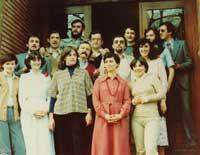
However, the greatest novelty of 1985 was that of Euskaldunization/literacy. It was a far-reaching innovation. In fact, we thought that there were untouched roads. It was thought that the Technical Literacies taught to train teachers in Basque would extend to the business world and offer workers specific training to develop their work in Basque. The first two courses were taught at the San Sebastián Municipal Savings Bank and the San Sebastián City Council. In the coming years, numerous courses were taught and the MOPI and LAKET projects were worked together. The main consequence of this initiative was the creation of an innovative vision of the Basque language and the business couple, both in political leaders and in companies: the Basque language needs a specific treatment in the business world. In this sense, a six-year agreement was signed with the Basque Government to promote the use of Basque in companies (1991-1996). Through this agreement we have acquired a specific methodology and a deep experience. Therefore, one of the main areas of action of Elhuyar in the future is to work in the world of work services in Basque.
The first vestige of the Encyclopedic Dictionary, which was then so tired and content, is found in the annex to the 1988 report, to which the first draft of the project is attached. After seeking grants throughout 1989, the writing of the Encyclopedic Dictionary began in 1990.
At the end of the 80's, due to the large volume of activities of Elhuyar, we were left with a small headquarters in Urbieta street of San Sebastian, both locally and infrastructure. After analyzing various alternatives, in 1990 we acquired a premises of about 400 m 2 in the industrial estate of Asteasuain in Usurbil.
The facts and achievements of this decade, perhaps very close, we have them to hit with a point of coldness, but it cannot be denied that Elhuyar has grown much both doing and working.
Let us briefly list the most relevant works and activities of recent years to renew memory: Creation of Eusenor (1991), Diccionario Enciclopédico (1993), Euskera-Castellano/Gastellano-Vasco Hiztegia (1996), primer CD-ROM en euskera Ezagutu Gipuzkoa (1994), Servicio ZETIAZ (1994), MicroplanificaciÃ3n de CAF (1995), Premios de DivulgaciServicios Científica (1994)
We look at 25 years. We have history. We have made contributions to Euskalgintza. Elhuyar has established itself as a cultural enterprise within Basque cultural activity. But the situation is not simple. It can be said that it is at a junction. It will be necessary to make great decisions that guarantee the viability of our project. In this sense, the political leaders of Elhuyar have the maximum responsibility, but it is not for this reason less, since their decisions or lack of decisions will facilitate the future of Elhuyar and other Basque institutions.

Gai honi buruzko eduki gehiago
Elhuyarrek garatutako teknologia



